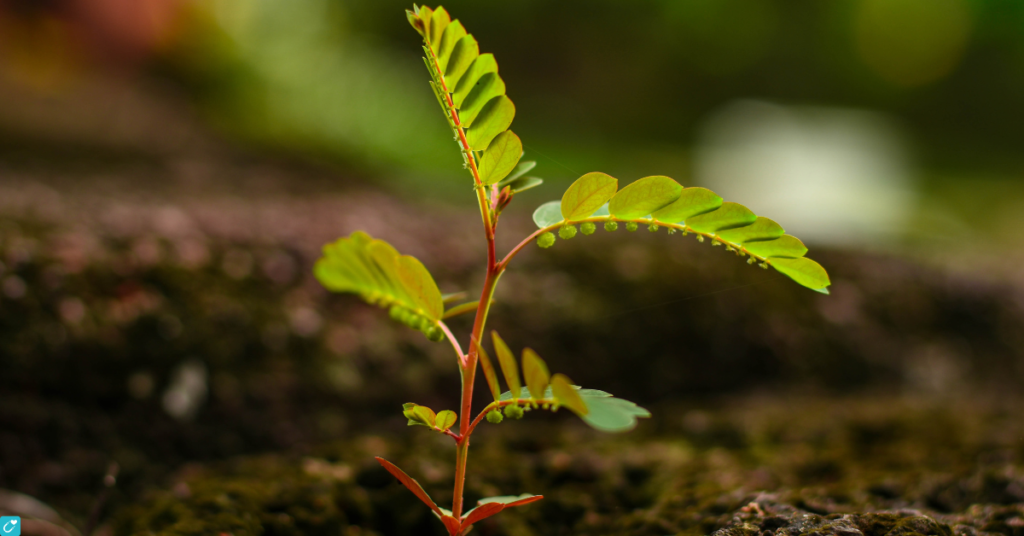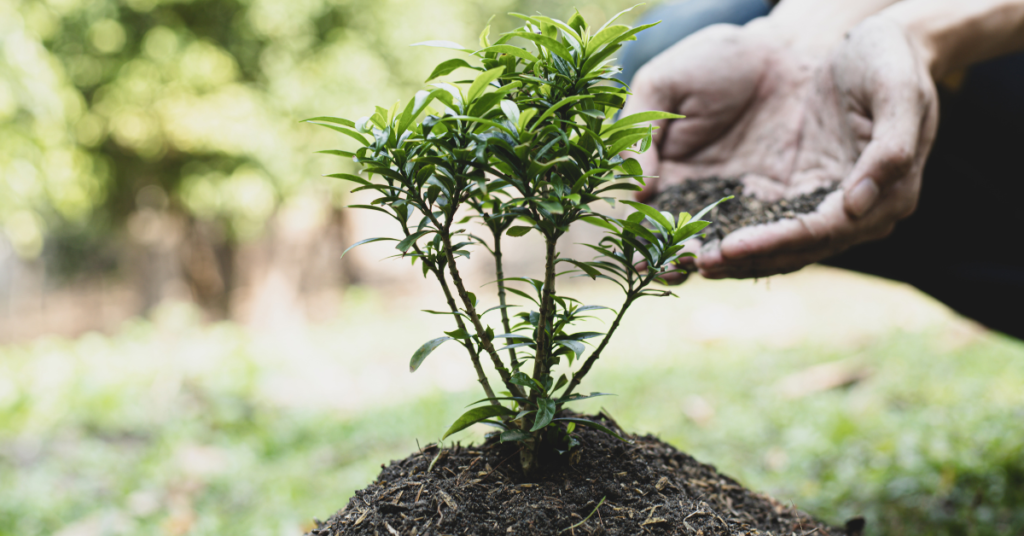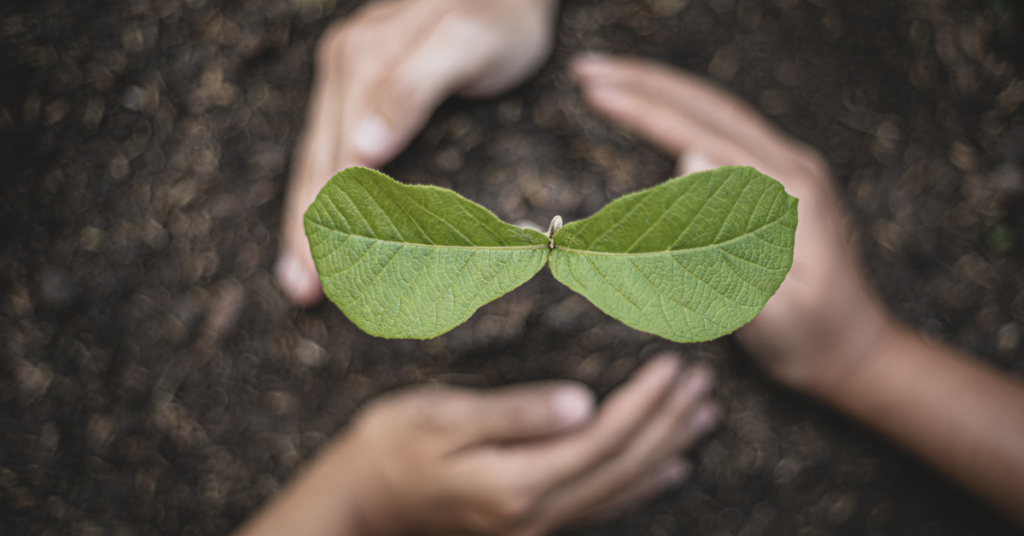Not to Plant near a Black Walnut. If you have a dark walnut tree in your yard or cultivate, you might be pondering around the best plants to develop close to it. The dark walnut tree, known for its striking appearance and profitable wood, can pose challenges for adjacent plants due to a standard chemical called juglone. Jug lone can hinder the development of numerous other plants, making it significant to get it “what not to plant close to a dark walnut tree.” In this comprehensive direct, we will investigate the impacts of jug lone and give a list of plants to dodge, guaranteeing a flourishing plant with the nearness of this magnificent tree.
Understanding Juglone and Its Effects
What Is Jug Lone?
Jug lone is a chemical compound from dark walnut trees (Glans Niagara). It is found in all parts of the tree, including takes, bark, and roots. This compound has telepathic properties, which can smother other plants’ development. This regular defense instrument makes a difference. The dark walnut tree diminishes competition for assets in its environment.
- Juggling (the aptitude): Keeping numerous objects in the discussion by catching and tossing them is the act of keeping multiple objects in the discussion. It’s regularly performed as a shape of amusement or expertise demonstration.
- Juggle (the app or device): It can allude to a particular app, apparatus, or program planned for overseeing errands, planning plans, or organizing information.
- Juggle (ordinary meaning): It can be too cruel to handle different duties or assignments simultaneously, regularly, with a few levels of ability or finesse.
How Jug lone Influences Plants

When jug lone filters into the soil, it can make an environment antagonistic to numerous plants. The compound meddling with the plants’ capacity to take up water and supplements, driving to destitute development, yellowing of takes off, and indeed plant passing. Understanding “what not to plant close to a dark walnut tree” requires knowing which plants are exceptionally touchy to jug lone.
- Component of Action
Jug lone (5-hydro-1,4-naphthalene) hinders different physiological forms in plants. Its essential components of activity include:
- Inhibition of Breath: Jug lone influences mitochondrial work in plants and disturbs cellular breath. Mitochondria are dependable for creating ATP, the vitality cash of cells. By interferon with breath, jug lone can decrease vitality accessibility, affecting cell development and function.
- Disruption of Protein Action: Jug lone can restrain particular chemicals in essential metabolic pathways. For instance, it may influence photosynthesis or supplement digestion chemicals, leading to diminished development and vigor.
- Impacts on Diverse Plant Processes
- Germination: Jug lone can repress seed germination in numerous plant species. This impact is frequently watched when seeds are planted in soil or compost sullied with jug lone. The compound can disturb hormonal adjustments, diminish protein action, or make an unfavorable environment for seedling establishment.
- Seedling Development: Youthful seedlings exposed to jug alone may show hindered development, chlorosis (yellowing of clears out), and decreased biomass. Jug’s effect on root advancement can be especially harmful, as sound root frameworks are vital for overall plant well-being and supplement uptake.
- Intelligent with Soil Microorganisms
Juggle’s telepathically impacts expand past coordinate intelligence with plants. It can impact soil microbial communities:
- Microbial Action: Jug lone can hinder the development and movement of soil microorganisms. This disturbance can influence the deterioration of natural matter, supplement cycling, and, in general, soil well-being. Decreased microbial movement can also affect plant well-being by constraining the accessibility of basic nutrients.
- Species-Specific Sensitivity
Different plant species display changing levels of affect ability to jug alone. A few plants are exceedingly helpless and appear to have critical development lessening, whereas others are more tolerant. For example:
- Sensitive Plants: Numerous herbaceous plants and trees (e.g., tomatoes, peppers, and apples) are touchy to jug lone. These plants regularly appear articulated indications of jug lone poisonous quality when developed close to dark walnut trees.
- Administration Strategies
For cultivators and arrival supervisors managing the Juggle’s impacts, a few techniques can be employed:
- Avoid Planting Touchy Species: If dark walnut or butternut trees are displayed, it’s shrewd to dodge planting species known to be touchy to jug lone in their vicinity.
- Physical Obstructions: Introducing physical obstructions, such as root boundaries or raised cultivate beds with jug lone-free soil, can offer assistance to avoid jug lone from influencing delicate plants.
- Soil Alterations: Progressing soil well-being through the expansion of natural matter and supplements can assist in relieving a few of the negative impacts of jug alone. Be that as it may, this approach may not wholly neutralize Juggle’s impact.
- Companion Planting: Planting jug lone-tolerant species near jug lone-producing trees may offer assistance in making a more adjusted plant environment.
What Not to Plant Close a Dark Walnut Tree?

When arranging your plants around a dark walnut tree, it is fundamental to select plants that are more tolerant of jug lone or maintain a strategic distance from those that are exceedingly touchy. Below is a comprehensive list of plants to avoid close to a dark walnut tree.
Vegetables and Herbs to Avoid
- Tomatoes
Tomatoes (Solarium Copernicus) are profoundly delicate to jug alone. Developing tomatoes close to a dark walnut tree can hinder development, and yellowing clears out and destroys natural product production.
- Potatoes
Potatoes (Solarium tuberose) battle in the nearness of jug lone. They may appear as signs of trouble, such as shriveling and destitute tuber development.
- Peppers
Like tomatoes and potatoes, peppers (Capsicum annual) are powerless against the impacts of jug lone. Dodge is planting peppers inside the root zone of a dark walnut tree.
- Lettuce
Lettuce (Lettuce sativa) can also endure when grown close to a dark walnut tree. It may display signs of diminished development and leaf discoloration.
- Basil
Basil (Optimum basilica) is another herb that does not pass well around dark walnut trees. Its development may be hindered and deliver less flavor.
Fruit Trees and Bushes to Avoid
- Apple Trees
Apple trees (Talus domestics) are delicate to jug alone. Planting them close to a dark walnut tree can lead to deficient natural product advancement and decreased tree vigor.
- Cherry Trees
Cherry trees (cherry app.) are too influenced by jug lone. If planted close to a dark walnut tree, they may encounter diminished development and destitute natural product generation.
- Blueberry Bushes
Blueberries (Vaccination app.) are touchy to jug lone and can show destitute development and decreased fruiting when planted close to a dark walnut tree.
- Raspberry Plants
Raspberry plants (Rufus adieus) may also struggle close to a dark walnut tree. They appear to have decreased vigor and destitute natural product production.
Flowers to Avoid
- Lilies
Lilies (Lies app.) are known to be delicate to jug alone. Planting lilies close to a dark walnut tree can result in destitute blossoming and, generally, health.
- Peonies
Due to the jug-lone compound, peonies (Patagonia app.) may not flourish close to a dark walnut tree. Their development might be hindered, and blossoming can be affected.
- Hosts
Hosts (Hosts app.) are commonly influenced by jug lone. They may appear as signs of trouble, such as diminished leaf measure and destitute growth.
- Bastille
Bastille (Bastille app.) can battle with jug lone presentation, driving to diminish blossoming and general plant health.
Alternatives and Arrangements for Planting Close a Dark Walnut Tree

If you need to maintain an excellent plant around your dark walnut tree, consider these choices and solutions.
Jug lone-Tolerant Plants
- Oak Trees
Oak trees (Querulous app.) are generally tolerant of jug lone and can flourish near a dark walnut tree.
- Maple Trees
Maple trees (Amer app.) are too well-known to endure jug lone well. They can be an incredible expansion to a plant close to a dark walnut tree.
- Pine Trees
Pine trees (Pius app.) are safe to jug alone and can coexist with dark walnut trees without noteworthy issues.
- Junipers
Junipers (Junipers app.) is another choice for planting close dark walnut trees. They are jug-lone-tolerant and can add beauty to your landscape.
Improving Soil Conditions
- Soil Testing
Conduct soil tests to determine the level of jug lone in your cultivate. This data can help you select suitable plants and make fundamental soil amendments.
Importance of Soil Testing
- Agricultural Efficiency: Soil testing is essential for optimizing trim yields. This not only moves forward edit well-being and efficiency but also anticipates the abuse of fertilisers, which can lead to natural issues like runoff and water pollution.
- Environmental Assurance: Soil tests help distinguish potential contamination from heavy metals, pesticides, or other poisons. This data is pivotal for monitoring and relieving natural dangers, particularly in regions used for mechanical exercises or waste disposal.
- Construction and Designing: For development ventures, soil testing decides the soil’s load-bearing capacity, soundness, and seepage properties. This guarantees that the building and framework’s establishment and basic astuteness are sound, decreasing the chance of auxiliary failures.
The Soil Testing Process
- Sample Collection: The step in soil testing is collecting soil tests. This should be done carefully to guarantee that the tests are representative of the region being tested. For rural testing, tests are, as a rule, taken from numerous spots in a field and blended together. Tests might also be collected from different profundities at the development site.
- Preparation and Dealing with: Once collected, soil tests must be arranged for investigation. This includes drying the soil, evacuating flotsam and jetsam, and crushing it to a fine consistency. Legitimate dealing with and capacity is vital to dodge defilement or misfortune of imperative characteristics.
- Laboratory Examination: The arranged soil tests are sent to a research facility for investigation.
Common tests include:
pH Level: Decides the sharpness or alkalinity of the soil, which influences supplement accessibility and plant growth.
- Nutrient Substance: Measures the levels of essential supplements such as nitrogen (N), phosphorus (P), and potassium (K), as well as auxiliary and micronutrients.
- Texture and Structure: Analyses the extent of sand, sediment, and clay to decide the soil surface, which impacts waste, air circulation, and supplement retention.
- Contaminants: Tests for the nearness of destructive substances like overwhelming metals or toxins.
- Interpretation of Comes AboutAbout: Once the investigation is complete, the Comes About will be deciphered to give proposals. These might incorporate particular fertilizer application rates or soil corrections for agricultural purposes. For development, they might incorporate soil treatment proposals or plan considerations.
- Reporting and Suggestions: The last step is to provide a nitty-gritty report that incorporates the test results and master suggestions based on the investigation. This report is vital for making educated choices about soil administration, land use, or development projects.
Benefits of Soil Testing
- Informed Decision-Making: Exact soil testing gives the information required to make educated choices about soil administration and its use.
- Cost Productivity: Soil testing can decrease unnecessary costs and maximize asset use by fitting soil corrections and fertilizers to particular needs.
- Environmental Preservation: Legitimate soil administration based on testing makes a difference in securing common assets, diminishes contamination, and advances feasible practices.
- Raised Beds
Consider utilizing raised beds for planting near a dark walnut tree. This can help relieve the impacts of jug lone by providing a controlled environment for your plants.
The benefits of raised beds include:
Improved Seepage: Raised beds are regularly depleted, which is superior to conventional cultivate beds, which makes a difference in avoiding waterlogging and root rot.
- Better Soil Quality: You can fill raised beds with high-quality soil and compost, moving forward plant growth.
- Raised beds can decrease the requirement for bowing and stooping, making plants more accessible.
- Extended Developing Season: The soil in raised beds warms up quicker in the spring, permitting for prior planting and expanded developing seasons.
- Weed and Bug Control: Raised beds can offer assistance in minimizing weed issues and making bother control easier.
- Soil Amendments
Soil alterations are materials included in the soil to move forward its physical properties, ripeness, and, by and large, well-being. They can upgrade soil structure, increment supplement substance, progress water maintenance, and bolster beneficial microbial action. Common soil corrections include:
- Organic Matter: Compost, matured fertilizer, and leaf shape enhance the soil with supplements and progress its texture.
- Peat Greenery: Includes natural matter and moves soil air circulation and dampness retention forward.
- Lime: Raises soil pH if it’s as well acidic, making supplements more accessible to plants.
- Sulfur: Brings down soil pH in soluble soils to make supplements more accessible.
- Gypsum: Makes strides in soil structure, particularly in clay soils, and makes a difference with drainage.
- Bone Supper: Includes phosphorus to back root advancement and flowering.
- Blood Dinner: Gives a speedy source of nitrogen for verdant development.
FAQs About Not to Plant near a Black Walnut
What are the signs of jug lone poisonous quality in plants?
Signs of jug lone poisonous quality incorporate yellowing clears out, hindered development, shrinking, and destitute blooming or fruiting.
How distant ought I to plant from a dark walnut tree?
It’s best to plant at least 50 to 80 jug lone-sensitive plants from the dark walnut tree, as its root framework can extend very far.
Can jug lone be evacuated from the soil?
Jug lone can stay in the soil for extended periods, but changing soil conditions and planting jug lone-tolerant species can help relieve its effects.
Are there any secure ground covers enough to plant close to dark walnut trees?
Yes, a few ground covers, such as certain sorts of greenflies and shade-tolerant grasses, can be secure to plant close dark walnut trees. Continuously check for jug lone resistance sometime recently planting.
Can I utilize mulch around dark walnut trees?
You can use mulch around dark walnut trees, but avoid materials containing jug lone. Natural mulches, such as wood chips, are generally safe.
Conclusion
Understanding “what not to plant close to a dark walnut tree” is fundamental for solid and dynamic cultivation. The nearness of juggling can make numerous plants challenging, but you can make a flourishing scene by choosing juggle-tolerant species and executing procedures to make strides in soil conditions. With cautious arranging and thought, you can appreciate the benefits of a dark walnut tree without relinquishing the well-being of your garden.

